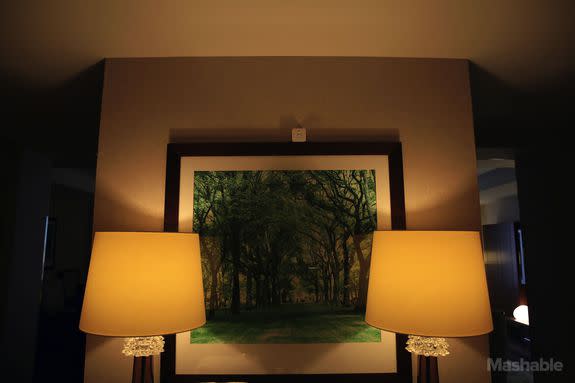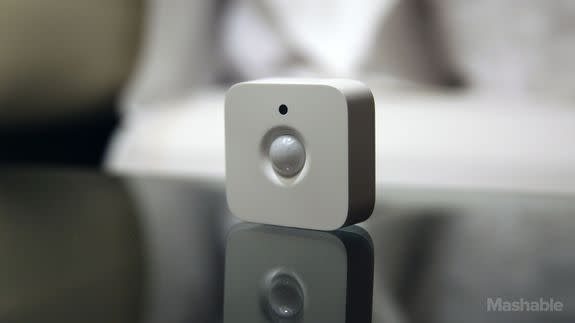Philips' motion sensor turns on your smart lights when you walk into a room

Using voice commands via the Amazon Echo's Alexa voice assistant or your smartphone to turn on your Philips smart light bulbs is convenient, but even better is just walking into a room and ta-daa!
Philips' new motion sensor does just that. The $39.95 wireless sensor measures roughly 2- x 2-inches and launches in early October.
SEE ALSO: This button could be the easiest way to control your smart home
There's really not much to the motion sensor. The sensor shoots out an invisible light field that spans 100 degrees horizontally and 100 degrees vertically. Its blind spot is 180-degrees to its sides.
But once it detects motion within its field of view, it'll trigger the connected Philips Hue smart lights you have in your home and turn them on. And it works fast, so there's no lag like there is if you connect your smart lights through IFTTT.

Image: raymond wong/mashable
The built-in light sensor is also smart enough to measure ambient light so it knows when it's daytime and nighttime. This is important because the motion sensor can be configured to adjust your lights to different preset scenes.
So, for instance, you could have the lights at full brightness during the day, but at nighttime, maybe you want them to be dimmer. One useful scenario is if you wake up in the middle of the night, trigger the motion sensor and the lights won't blind you, but instead switch to softer luminance.

Image: raymond wong/mashable
Using the Philips Hue app for iOS and Android you can set the motion sensor to turn off after a set amount of time.
The sensor can be placed anywhere in your home in any position. You can place it on a cabinet, a bookshelf, a doorway table or mount it to the wall or ceiling.
Easily mountable

Image: raymond wong/mashable
Requires two AAA batteries

Image: RAYMOND WONG/MASHABLE
It comes with a magnetic mount on the backside, which can be screwed into a wall and swiveled at various angles.
The motion sensor requires two AAA batteries, which power it for 2-3 years. Up to 12 motion sensors can be connected to a Philips Hue Bridge.
During a recent demonstration, Philips had the motion sensor connected to several smart light bulbs in a New York City hotel room and they worked as expected. As soon as I walked in front of a motion sensor, lights turned on in a hallway and in a bedroom/bathroom setup.
The motion sensors are sold separately, but in the company is considering bundles in the future.
We were supposed to use our smartphones to control our smart homes, but it's starting to seem more likely that voice control and motion sensors are better solutions. It just takes too long to pull out your phone, launch an app and then tap a digital switch. Same goes for smartwatches.
I just want my smart home to react to my behavior when I'm at home and Philips' motion sensor does just that.

 Yahoo News
Yahoo News 